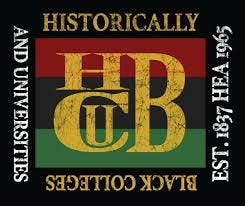Issue #80 Education June 6, 2022 (Approximately 4.5 minutes reading time)
The emergence of HBCUs (Historically Black Colleges and Universities) came about because of racism and discrimination in the higher education systems of 19th century America. At the time, the major universities supported slavery and used slave labor to erect the buildings and maintain the grounds of their campuses.
Prior to the Civil War and the constitutional amendments passed soon after, it was illegal to even teach slaves to read and write in most areas of the United States. After the Civil War, several northern religious societies started schools staffed by white and Black missionaries.
In the North, quota systems were used until the late 1960s to limit the number of Black students who could attend PWIs (Primarily White Institutions), while in the South segregation was legal until the Brown V Board of Education Supreme Court decision in 1954.
PWIs did not fully integrate until the late 1960s.
HBCUs have a rich, albeit often fractious history but nevertheless have positively affected higher education opportunities for Black Americans since the mid- to later 1800s.
Keep reading with a 7-day free trial
Subscribe to We Are Speaking to keep reading this post and get 7 days of free access to the full post archives.




